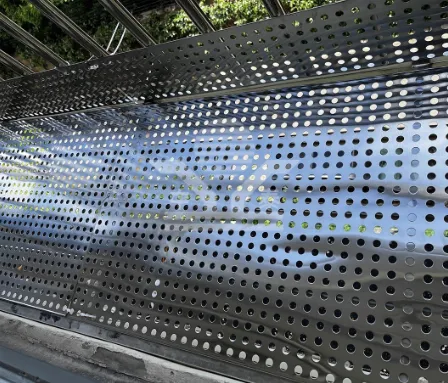Temporary Noise Barriers An Innovative Solution for Noise Pollution Control
In today's rapidly urbanizing world, noise pollution has become a significant environmental concern. It affects the quality of life, health, and even productivity of individuals living near busy roads, construction sites, and industrial areas. As cities expand and infrastructure projects increase, the need for effective noise mitigation strategies has never been more critical. One innovative approach is the use of temporary noise barriers, which provide a flexible, cost-effective solution to this pervasive issue.
Temporary noise barriers are designed to reduce the transmission of sound from one area to another, particularly during construction activities or road expansions. These barriers can be made from various materials, such as acoustical panels, foam, or even recycled materials, depending on the project's needs and budget. They are often lightweight and easy to install, making them an ideal choice for short-term applications where permanent structures are not feasible.
The primary advantage of temporary noise barriers is their ability to deliver immediate relief from noise pollution. For instance, during the construction of highways or buildings, these barriers can be erected quickly to shield nearby residents from disruptive sounds. This is especially important in urban settings, where construction activities can drastically affect daily life. By providing a temporary sound shield, the barriers help minimize complaints from the community and ensure that projects can progress without significant interruptions.
temporary noise barriers

Another benefit is the adaptability of temporary noise barriers. Unlike permanent structures, which require extensive planning and approval, temporary barriers can be rapidly deployed and modified as needed. If construction schedules change or if noise levels exceed anticipated limits, these barriers can be relocated or adjusted to optimize their effectiveness. This flexibility is crucial for project managers who must navigate the complexities of urban construction while adhering to noise regulations and maintaining public satisfaction.
Moreover, some temporary noise barriers are designed with sustainability in mind. For example, certain barriers are constructed from recyclable materials or can be reused in different projects, aligning with modern sustainability goals. This not only reduces waste but also promotes a circular economy approach within the construction industry.
However, it is essential to recognize that temporary noise barriers are not a one-size-fits-all solution. Their effectiveness depends on various factors, including their height, material, and the frequency of the noise being mitigated. Proper planning and assessment are crucial to ensuring that these barriers meet the specific needs of each project.
In conclusion, temporary noise barriers offer an effective, adaptable, and sustainable solution to combat noise pollution during construction and urban development. As cities continue to grow and evolve, embracing such innovative approaches will be crucial in preserving the quality of life for residents. By reducing noise disturbances, we can foster better living environments, enhance community relations, and promote more harmonious urban spaces. As awareness of the impacts of noise pollution rises, the implementation of temporary noise barriers will likely become an increasingly important strategy in urban planning and construction.
-
The Best Metal Mesh Solutions: Expanded Aluminum Metal vs. Expanded Stainless Steel Metal
NewsSep.10,2024
-
Round Perforated Sheets vs. Hexagonal Perforated Sheets vs. Embossed Perforated Sheet Metal
NewsSep.10,2024
-
Perforated Metal Sheets
NewsSep.10,2024
-
Experience The Excellence Of Stainless Steel Grating
NewsSep.10,2024
-
Discover the Versatility Of Metal Mesh Expanded Forming Machines
NewsSep.10,2024
-
Discover The Advantages Of Steel Grating For Sale
NewsSep.10,2024
Subscribe now!
Stay up to date with the latest on Fry Steeland industry news.

